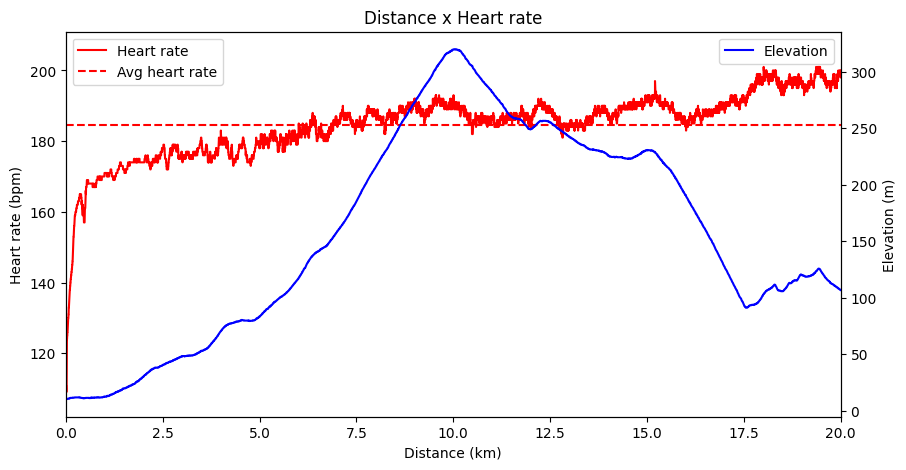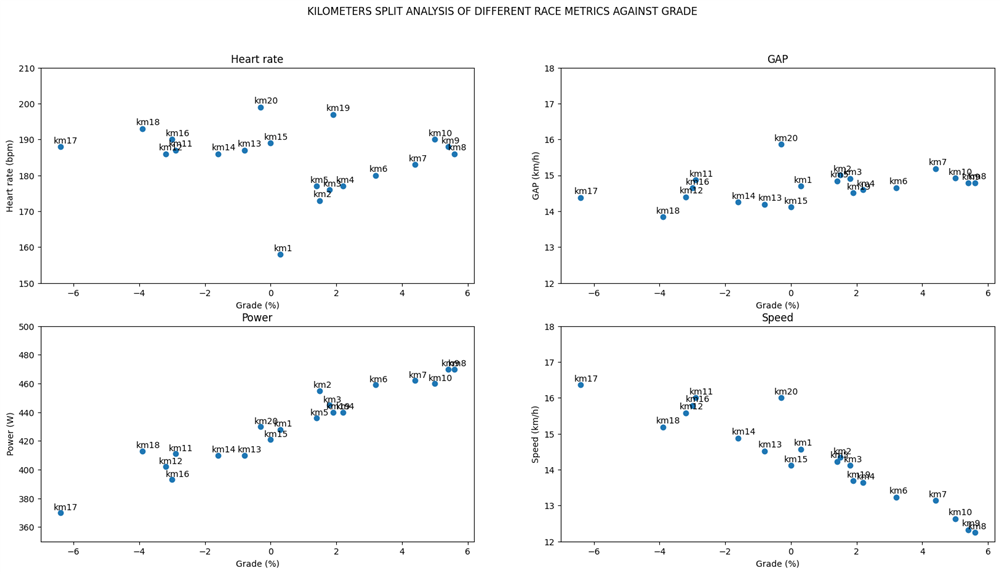Hello everybody,
This week-end I ran 20km (Marseille-Cassis, in France) with an interesting elevation profile : the first 10 kilometers are going up (with grade from 1% to 6%) and the 10 following kilometers are going down (-1% to -5%, with only 1 exception kilometer going up again but only by a small 1% grade).
As a matter of fact I think that I did a great job to run that race at a constant intensity, therefore adapting my pace to the grade. The strategy had been planned using grade data provided by the race organisers and the graded-adjusted pace (GAP) model from Strava (I am using the formula described here).
Below you can find my heart rate data combined with elevation, to illustrate the fact that the effort was rather constant (with of course some cardiac drift, it was 25degrees and I gave it all) whatever the grade.

So now that the context is settled, let's discuss the main topic of this post : is power useful to assess running intensity ?
I was running with the forerunner 255 and HRM pro +, so the watch saved power data along all the race and I was surprised to see that unlike GAP, power does not seem to be following running intensity.
Please find below an analysis of heart rate (proxy for effort), speed, GAP (also proxy for effort) and power (which I though was a proxy for effort but seems to be too highly correlated to grade...):

In my opinion, power would have been a bad indicator to pace myself during the race, leading to too slow speed during ascent and too fast speed during descent!
So I guess my questions are :
- Am I correctly understanding the purpose of running power in general ? (that it should be a proxy for effort intensity level)
- Is Garmin running power not ready to be used as a pacer when going for a hilly run ? (I would be curious to now if someone with a Stryd sensor for instance, or power from another brand, ran that race and would be willing to share insights)
Thanks a lot for your feedbacks!


